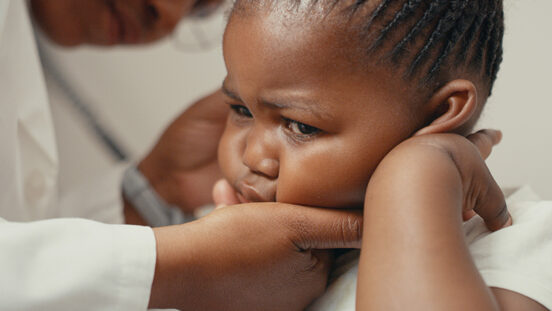Does my kid need braces? An expert shares the clues to keep watch for
The journey to a perfect smile begins younger than you might have thought.
By Annamaria Sordillo, Scientific Consultant for AIRFLOW© Dental Spa
As parents, it is natural to want your child to have a beautiful smile. It is an old misconception that one needs to wait until all the adult teeth have erupted before considering braces.
Instead, recent research has shown that earlier intervention is beneficial, and allows the orthodontist to use the natural growth to help the treatment.
Between ages seven to eight it’s an excellent time to assess your child’s bite.
What are the signs that my child may need braces?
While nothing beats the expert eye of an orthodontist, this is where you can spot clues that your child may need braces:
The bite
Ask your child to bite their teeth together naturally. The upper arch of teeth is normally wider than the lower arch, covering it as a “lid on a box”. Are there any lower teeth, including molars, sitting outside the upper ones? This is called a “crossbite”.
The front teeth
Biting together, the upper front teeth should contact and cover around a third of the lower ones. Do they seem to overlap excessively? Or do the upper teeth stick out too much and are not even touching the lower ones? These conditions are called “deep bite” and “open bite” respectively.
Space
The lack of space between teeth can be a concern. Do the teeth seem to be way too big? Are they overlapping, crooked or growing considerably out of the arch?

Annamaria Sordillo is an Italian dentist and medical writer, with a strong passion for periodontology and preventative dentistry.
Symmetry
Teeth typically grow and are lost with similar timing and in the same position on the left and right side of the mouth.
Have any baby teeth been lost too early, or are they being retained for too long? Can you spot any extra teeth or missing teeth on one side but not the other?
Breathing
Breathing through the nose is essential not only for correct face development but also for general health and wellbeing. Observe your child during their daily routine: do they breathe easily with their nose, or do they keep their mouth open most of the time? Do they sleep well, or do they snore or struggle to breathe during the night?
If you think any of these apply about your child’s teeth, your family dentist is the first point of contact. They will check the general health of the mouth, confirm the necessity of orthodontic treatment and advise the appropriate timing to start it.

Your family dentist is the first point of contact if you have any concerns about your child’s teeth.
What type of braces does my child need?
Traditionally, orthodontic treatment involves fixed metal braces that generate the desired movement with the aid of elastics and wires. Your orthodontist may also recommend a pre-treatment phase with functional appliances. These appliances can allow an expansion of the jaw and proper nasal breathing, among other benefits.
Nowadays, clear aligners are enjoying great popularity. They are widely used among adults but can be an option for kids and teenagers too. Aligners are more discreet, require less time in the dental chair, and can help overcome anxiety about wearing braces.
However, aligners may not always be the best option. Being removable, you need to be very vigilant about your child wearing them for the prescribed amount of time. Based on the type and the extent of the bite problem, your orthodontist may recommend traditional braces. Metal braces allow a wider range of tooth movements, which makes the treatment easier and faster, and are still the preferred method to get perfect results.
WATCH: How braces work. Continues after video …
What can I do to help my child during orthodontic treatment?
Good oral hygiene and an appropriate diet are crucial during orthodontic treatment with traditional braces. To prevent wires and brackets from moving or breaking, your child should avoid hard or sticky foods, such as:
- Lollies, chocolate and snack bars
- Crunchy muesli and cereals
- Crackers, chips and pretzels
- Nuts
- Popcorn
They can still have crunchy fruits and vegetables such as apples if cut into small pieces and chewed carefully. Make sure they brush diligently after each meal.
Your child still needs to see the general dentist every 3-6 months for a professional clean and to check for tooth decay.
Nowadays, many dentists and hygienists are implementing in their practices the AIRFLOW® Dental Spa, a revolutionary new technology that allows efficient, comfortable and fast cleans. The AIRFLOW® Dental Spa combines air, fine powder and warm water to create a spray that gently cleans teeth and braces, even in areas that are difficult to reach. This ensures that the teeth will be beautiful, healthy and strong once the braces are taken off.
You can find your nearest AIRFLOW® Dental Spa clinic or suggest a clinic at www.airflowdentalspa.com.au




